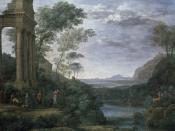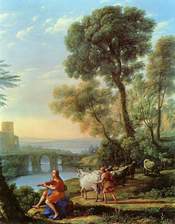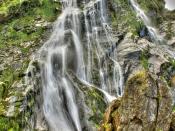Landscape Painting of 18th century in Ireland
The development of Irish landscape painting began with the topographical� (the graphic draft in detail of features of a certain place to show their relative positions) views of certain places in Ireland in the 17th century. The most associated painter with Ireland was James Malton, who later becomes influential to the topographical landscape painters. The change from topographical views occurred only in the middle of the 18th century. Painters were largely relying on the topographical prints, engravings and drawings. At this period they looked at continental masters' skills, shown in their mature works of classical style of Dutch, appreciating antiquity; with Italian and French emphasis. The Dublin Society was also important for the artists as they encouraged them to paint and exhibit their works here; and some of them were granted with awards. Some philosophical writings at the time of Kant, Lessing and Burke, influenced the artists with the spark of romanticism�, which refers to 18th century movement, highlighting the withdrawal from established values; involving a notion of imagination, emotion and nature.
Some of the best Irish landscape painters were George Barret (1732-1784) William Ashford (1746-1824) and Thomas Roberts (1748-1778). Their paintings reflected imaginary and real landscape. Their work has many similar features, but at the same time they are somewhat different. The works often provide a historical evidence of how might look certain places in 18th century.
George Barret devoted almost ten years to landscape painting in oils and watercolors; and studied art under the Robert West. The ideas of Burke in his essay A Philosophical Enquiry into the Origin of Our Ideas of the Sublime and Beautiful greatly encouraged him to study directly from nature and place it to practical application. Barret was not very good at painting human figures, so...



Nice Work
Good info! Even though I haven't seen the actual painting its as if I can see it just by reading your work. Good Job !
0 out of 0 people found this comment useful.